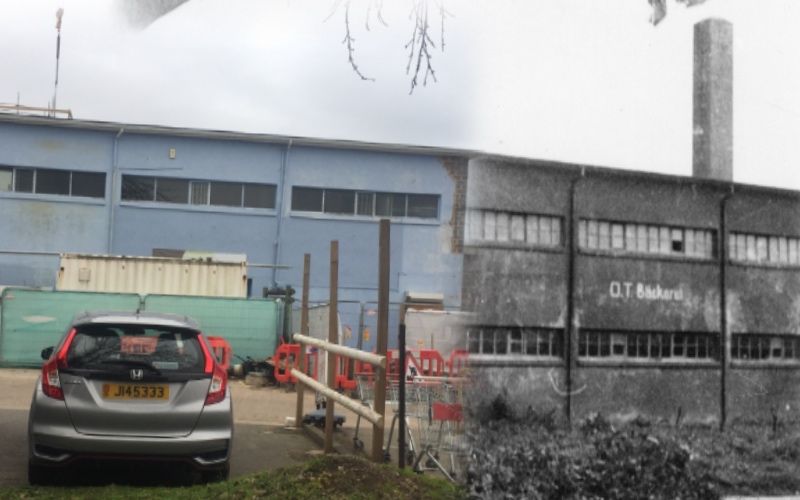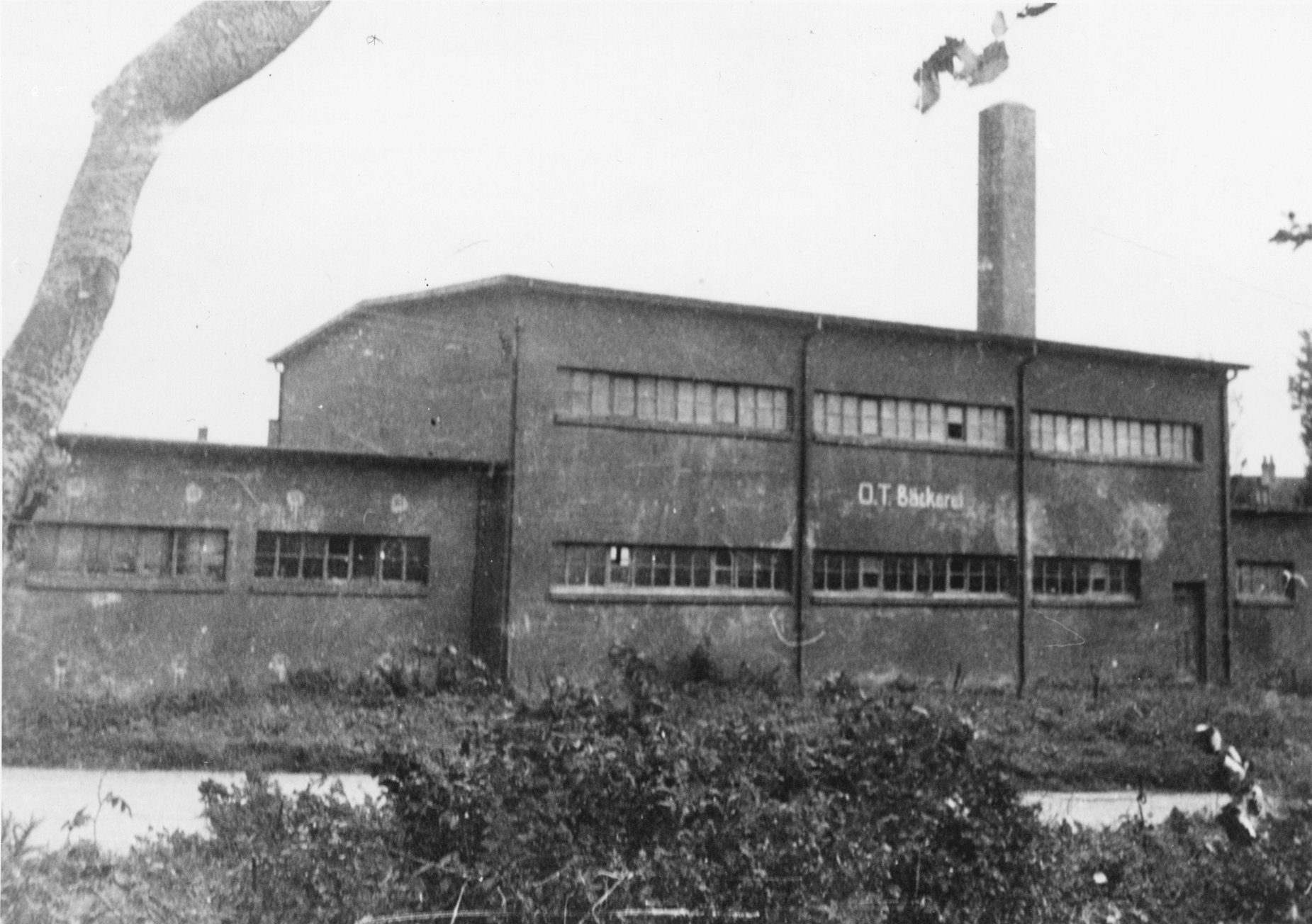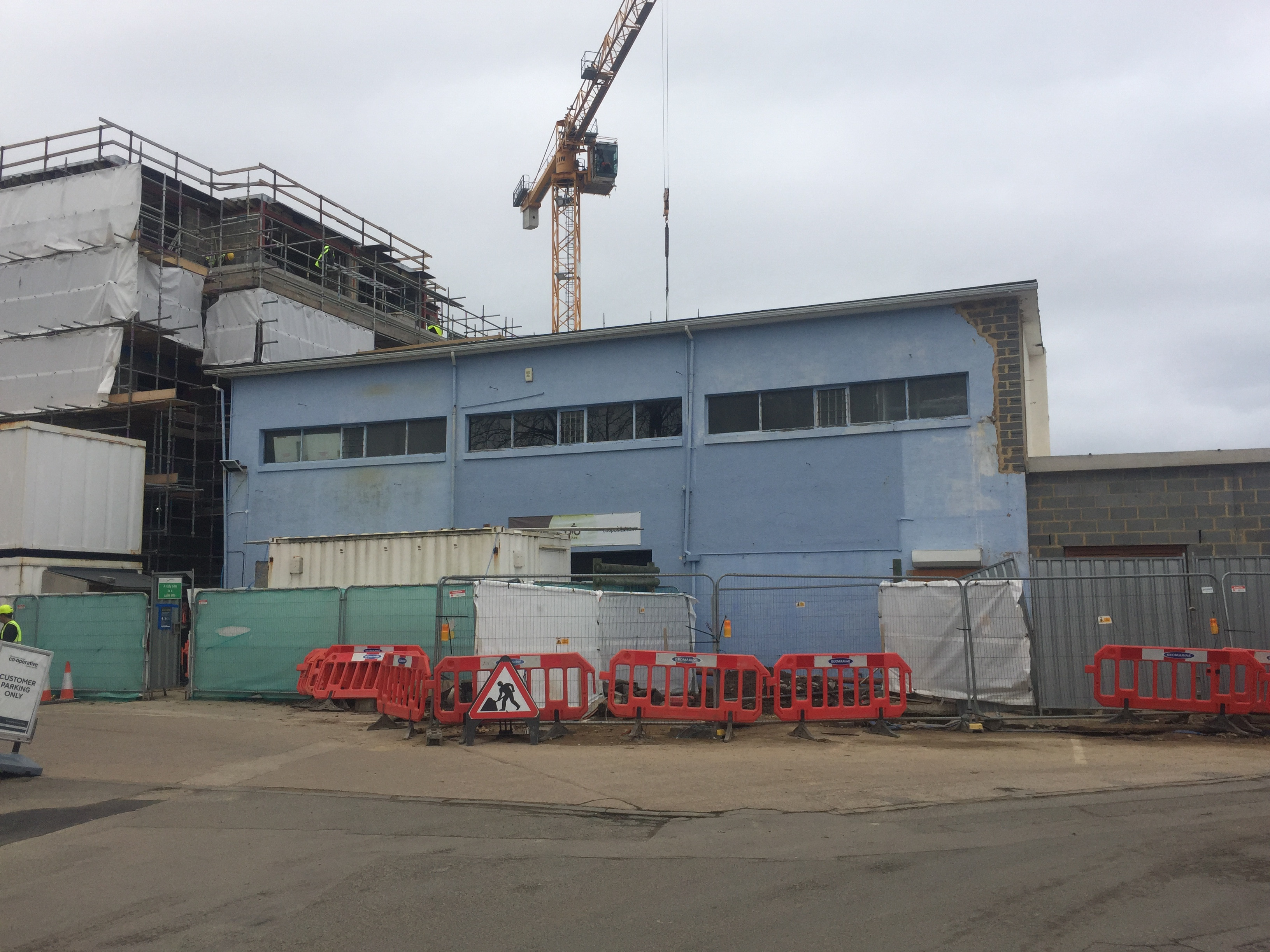


An Occupation-era bakery built to feed forced and slave labourers will be restored with a chimney stack and a prominent German inscription.
The building at Beaumont was destined to be demolished at one point but developer Dandara said that it would now be “reinstating the old bakery rather than demolishing and rebuilding."
Originally, the developer planned to build six flats and one retail unit on the site, which previously housed Total Sport, but it will now be a single commercial unit.
Dandara has also pledged to reinstate the bakery chimney, recreate the original ‘OT Bäckerie’ sign in cement on the main façade, as a permanent reminder of the building’s original function, and to place a plaque on the building which tells its story.

Pictured: The original wartime bakery, with the German inscription clearly visible on the side of the building and the chimney stack above (Société Jersiaise).
Matthew Costard, the Channel Islands Occupation Society’s Heritage and Planning Liaison Officer, said he was very pleased that the building had been saved.
“The bakery has significant historic value because it is one of the last tangible examples of infrastructure created by the Organisation Todt to serve the workforce created to build the island’s fortifications,” he said. “With this restoration, the building can become a memorial to those who endured such hardship in the island.”
Pictured: The building is located in the Beaumont area.
The bakery, built in 1942 and now a Grade 4 listed building, supplied bread to the workers of Organisation Todt and troops. It was one of a number of OT sites in the area, which included a labour camp on Goose Green, a power station near Tesson Chapel, which is now the Bel Royal Motors Garage, and the organisation‘s main ration store, which was demolished when the La Mielle apartments were built along Route de la Haule. A Todt railway also ran along the perquage to the seafront.
Todt was a paramilitary organisation established in 1933, which followed the army wherever it fought. It had a parallel command to the German military and its numbers swelled in Jersey after Hitler signed an order to turn the Channel Islands into an ‘impregnable fortress’ in October 1941.

Pictured: The building as it is currently.
Many of the Organisation Todt workers were not strictly slave workers, as they are frequently described, because a number were actually volunteers. Most were forcibly recruited, but were paid and not generally ill-treated. They came from many countries including Spain, Poland, France, Belgium and even China.
However, those from the Soviet Union, mostly from the Ukraine, were slaves and treated badly because the Nazis thought Slavs to be ‘untermenschen’ or sub-human.
Aside from the fortifications, bakery and power station, remaining Todt-built structures include railway bridges and some electricity towers, such as the one near the lower entrance to Queen’s Valley reservoir.
Comments
Comments on this story express the views of the commentator only, not Bailiwick Publishing. We are unable to guarantee the accuracy of any of those comments.